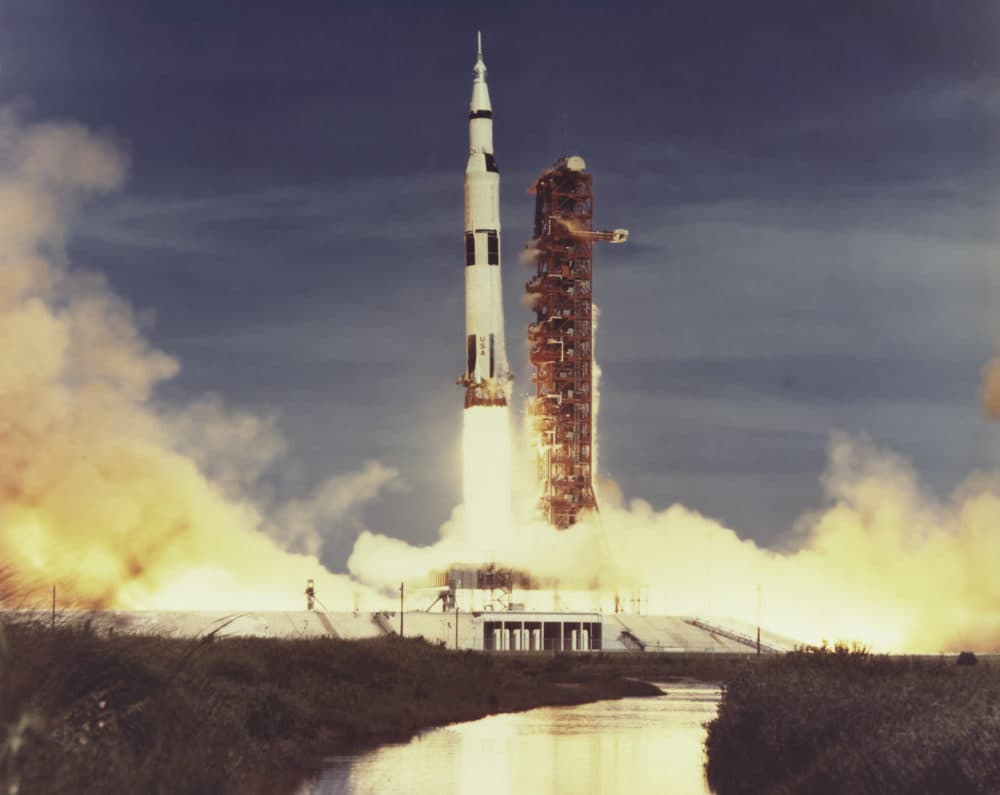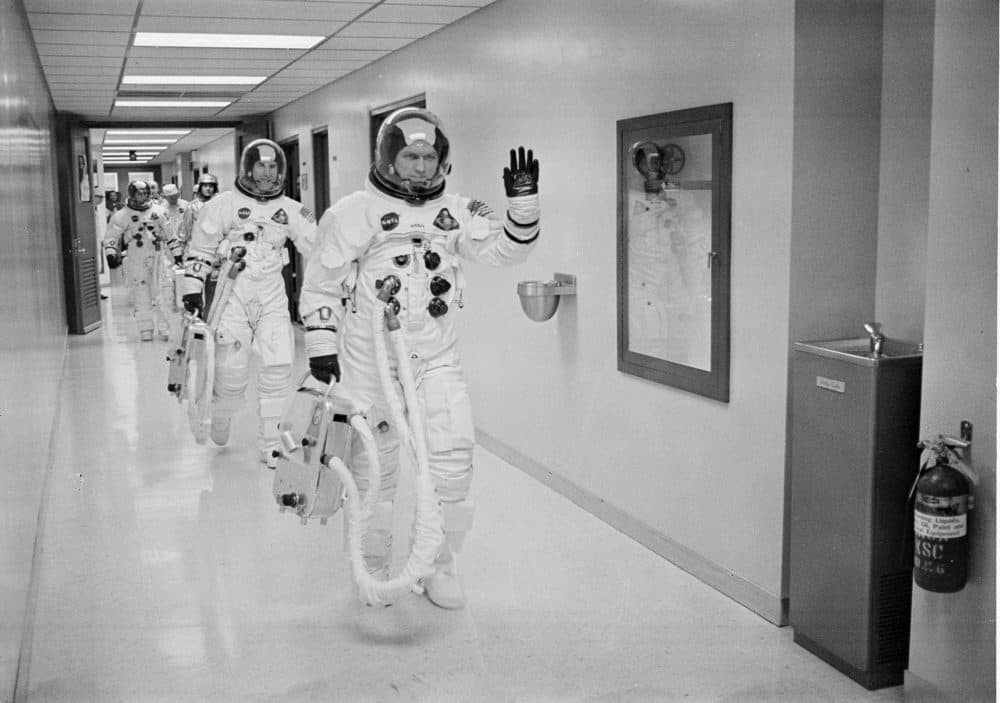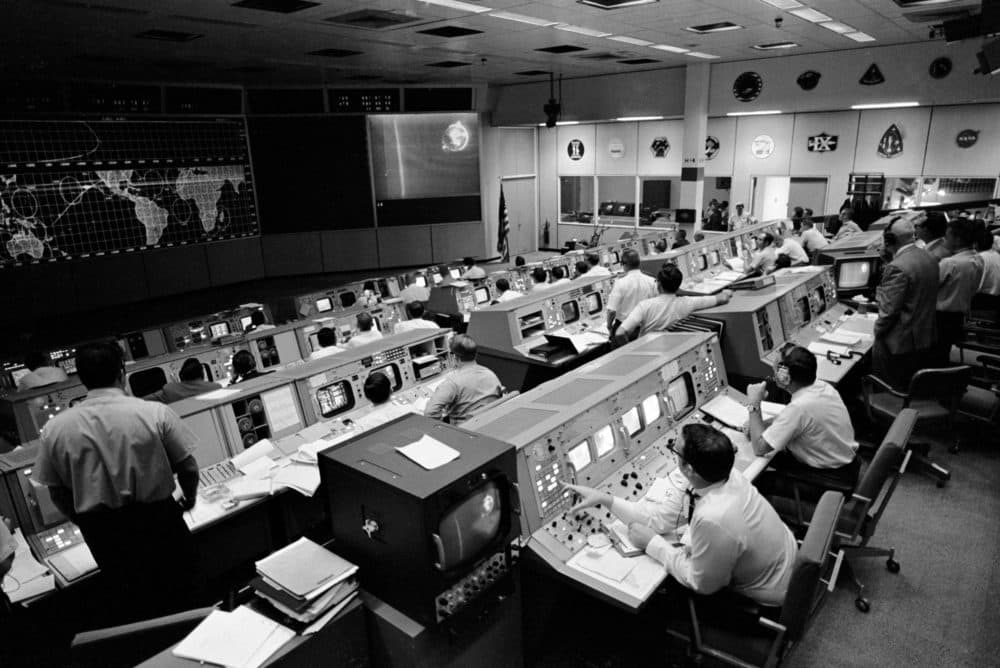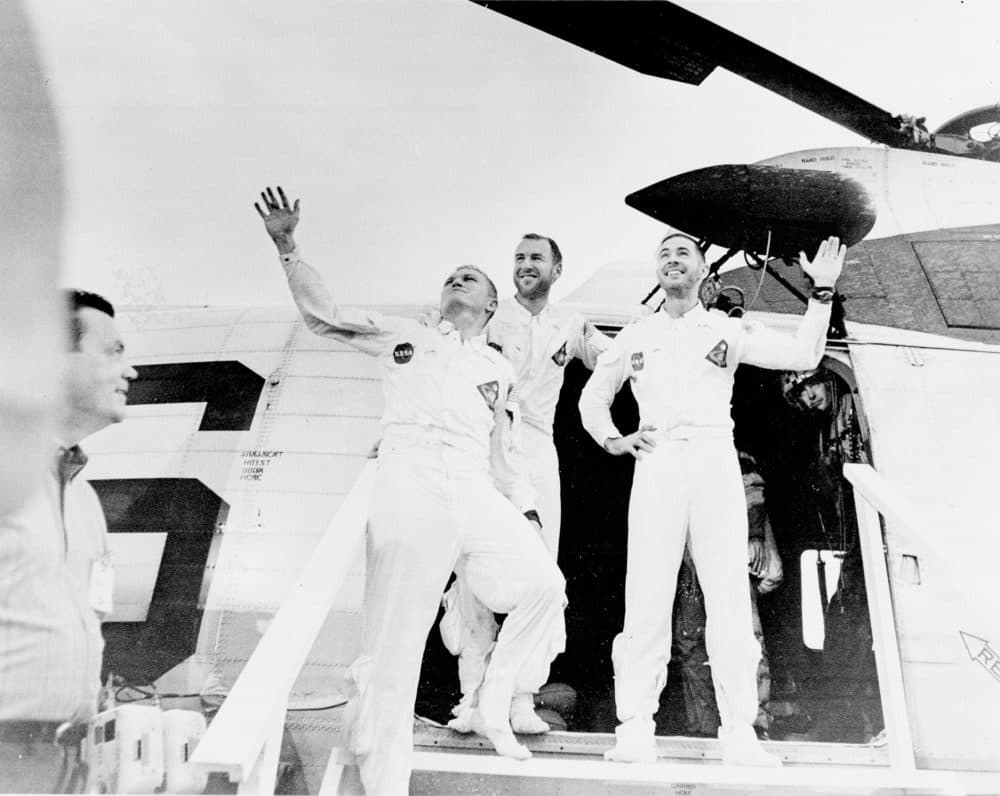Advertisement
NOVA Documentary Takes A Look Back At Humans' First Trek To The Moon On Apollo 8

Fifty years ago this week, Apollo 8 became the first ship to leave Earth's orbit and go to the moon — orbiting it 10 times. A new NOVA documentary about the expedition, "Apollo's Daring Mission," airs Wednesday on PBS stations.
Here & Now's Jeremy Hobson talks to the film's director, Rushmore DeNooyer, and John Aaron, who worked in Mission Control for Apollo 8.
"Almost everybody knows about the first moon landing, Neil Armstrong," DeNooyer says. "I would argue that the landing couldn't have happened if 8 hadn't happened."
The Apollo 8 mission capped off an "extremely divisive" year in America, DeNooyer says. That year, 1968, saw the Democratic National Convention break out in race riots, the U.S. military was bogged down in Vietnam, and Martin Luther King Jr. and Robert Kennedy were assassinated.
"No one expected it, but there they were," he says. "The last week of the year we find this mission at the moon for the first time circling the moon on Christmas Eve, and then the three astronauts read the story of Genesis from the Bible. And it was an unbelievable moment."
But the film starts with a grim moment in NASA history — the launch pad death of three astronauts in the Apollo 1 space module. Aaron says he was working in Mission Control that night.
"That was my first shift in the Apollo program having just come off the Gemini program," Aaron says. "I was there making sure that all the communication circuits and the data circuits were working well when suddenly, I heard the event happen. And like I say, I was new to the program, but I knew what had happened instantly."

Interview Highlights
On why the film begins with the Apollo 1 tragedy
Rushmore DeNooyer: "It really seemed to be a good bookend to the story. I mean, the Apollo 1 fire, until the Challenger accident, that was the lowest moment I think NASA ever had. They lost three astronauts. And people knew what they were doing was very dangerous, but no one was thinking it was dangerous on the ground. I mean, this was considered a routine test. It wasn't even classified as dangerous. So for example, they didn't have ambulances and fire trucks standing by because it was considered a routine test. ... I have to say NASA investigated itself after the fire, and they didn't pull any punches, and they found a lot of problems with their procedures and a lot of problems with the spacecraft."
John Aaron: "I think there was a contribution unfortunately that was made by those three astronauts relative to the space program. And I know that's something that you have to be careful how I think about that, but there are a number of things, weaknesses that crept into the design of the spacecraft in addition to things that caused the fire. NASA stood down. They had a mindset that we're going to dissect this spacecraft from top to bottom. We're going to audit all the designs, and that's what happened. After that fire, we put our heads down and did all that, and 22 months later, we had a brand new redesigned spacecraft that we flew on Apollo 7, and the spacecraft performed flawlessly."
Advertisement

On the first images of Earth from the moon
DeNooyer: "A beautiful beautiful photograph that Bill Anders took and all three of the astronauts say that, you know, there was that moment, no one was expecting that they would be looking at the Earth or thinking about the Earth. First time anyone was close to the moon, they were scouting out good places to land. Nobody thought, 'Oh yeah, you ought to photograph the Earth as well.' But when all three of them saw it, the way they tell it, they all started grabbing cameras because it just took their breath away."
Aaron: "I remember that. You know in retrospect, I think we went to the moon thinking we're going to spend that time studying about the moon. It got set up that way because the way the spacecraft attitudes [were] on the weight of the moon, the crew never got a chance to look back at the Earth. We went into lunar orbit, and it was two or three revolutions later before the attitude was changed, and when they came around the corner of the moon, after being on the backside, wow, there it was.
"So they were absolutely surprised, and they wound up, what happened was [they] probably captured the photograph that was the photograph of the last century. That contribution I believe caused everybody on the planet to look different at our beautiful blue planet. How small it is, how fragile it looks, and that picture with our planet, our Earth cast on the background of total darkness of space in the universe gives you a whole new feeling of how to look at solar problems here on Earth."

On what Apollo 8 meant for computers
DeNooyer: "There's so much that Apollo accomplished. I mean, the Saturn V, you know, when John Glenn went into orbit for the first time, the first American to go into orbit, the rocket he was launched on had been tested without a person on it about 50 times. The Apollo 8 was was only the third time that rocket ever flew, and here they were putting three people on it. The onboard computer that they developed for the Apollo spacecraft was an incredible accomplishment. It influenced our personal computers today. It was really the first time people trusted their lives to computers in the way that we now sort of take for granted."
Emiko Tamagawa produced and edited this interview for broadcast. Samantha Raphelson adapted it for the web.
This segment aired on December 26, 2018.
